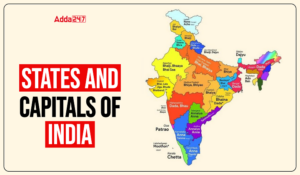S&P Global’s report, titled “Look Forward: India’s Moment,” projects India’s economic growth trajectory from fiscal year 2023-24 (FY24) to FY31. The country is set to remain the fastest-growing large economy, with an expected GDP growth rate of 6% in FY24. S&P Global is optimistic about India’s potential, forecasting an average growth rate of 6.7% per year during this period, driven primarily by capital expansion. The report envisions India’s GDP to reach $6.7 trillion by FY31, and per capita GDP to rise to approximately $4,500.
I. India’s Strong Recovery from the Pandemic

India’s GDP growth rebounded impressively at 7.2% in fiscal year 2023 after navigating through the challenges of the pandemic.
II. Capital Expansion as the Dominant Growth Driver
S&P Global expects capital to contribute significantly to India’s average GDP growth of 6.7% during the decade, with a projected 53% contribution by the end of FY31.
III. The Role of the Private Sector in Investments
While the government has played a pivotal role in boosting investments, the report foresees the private sector gradually increasing its investments due to healthy corporate balance sheets. Various factors, including government intervention through initiatives like the production-linked incentive scheme, will drive private investments.
IV. Challenges and Opportunities for Private Sector Investments
-
Healthy Corporate Balance Sheets: Favorable corporate financials create a conducive environment for increased private sector investments.
- Government’s Interventionist Investment Strategy: The government’s proactive investment strategy, such as the production-linked incentive scheme, will stimulate private investments.
-
Capacity Utilization: As capacity utilization rises across sectors, it will encourage private investments.
V. Leveraging Demographic Dividend and Increasing Labor Force Participation
India’s 678.6 million-strong labor force will play a crucial role in driving short-term economic growth. Increasing women’s participation in the labor force will be pivotal for sustained growth, given that only 24% were participating in 2022.
VI. Paving the Way to Becoming a Global Manufacturing Hub
To secure its economic future, India aims to increase its share of global manufacturing exports and raise manufacturing’s contribution to GDP to 25% by 2025. A robust logistics framework will be essential in achieving this goal.
VII. The Role of Digital Infrastructure in Driving Growth
Digital infrastructure presents a significant opportunity for high growth. Advancements in technology and connectivity will fuel various sectors of the economy.
VIII. The Need for Structural Reforms
Success in achieving sustained growth will depend on India’s ability to implement structural reforms in land, logistics, and labor. These reforms will enhance competitiveness and attract more foreign direct investments.
IX. Geopolitics as a Tailwind
Favorable geopolitical factors can provide additional support to India’s economic growth prospects.
Find More Ranks and Reports Here




 States and Capitals - How Many States in...
States and Capitals - How Many States in...
 Top-10 Countries that Drink Most Coffee ...
Top-10 Countries that Drink Most Coffee ...
 Which is the Largest Mangrove Forest in ...
Which is the Largest Mangrove Forest in ...

